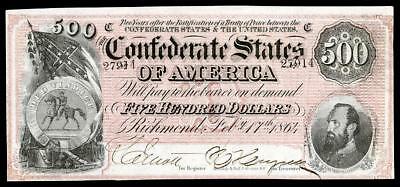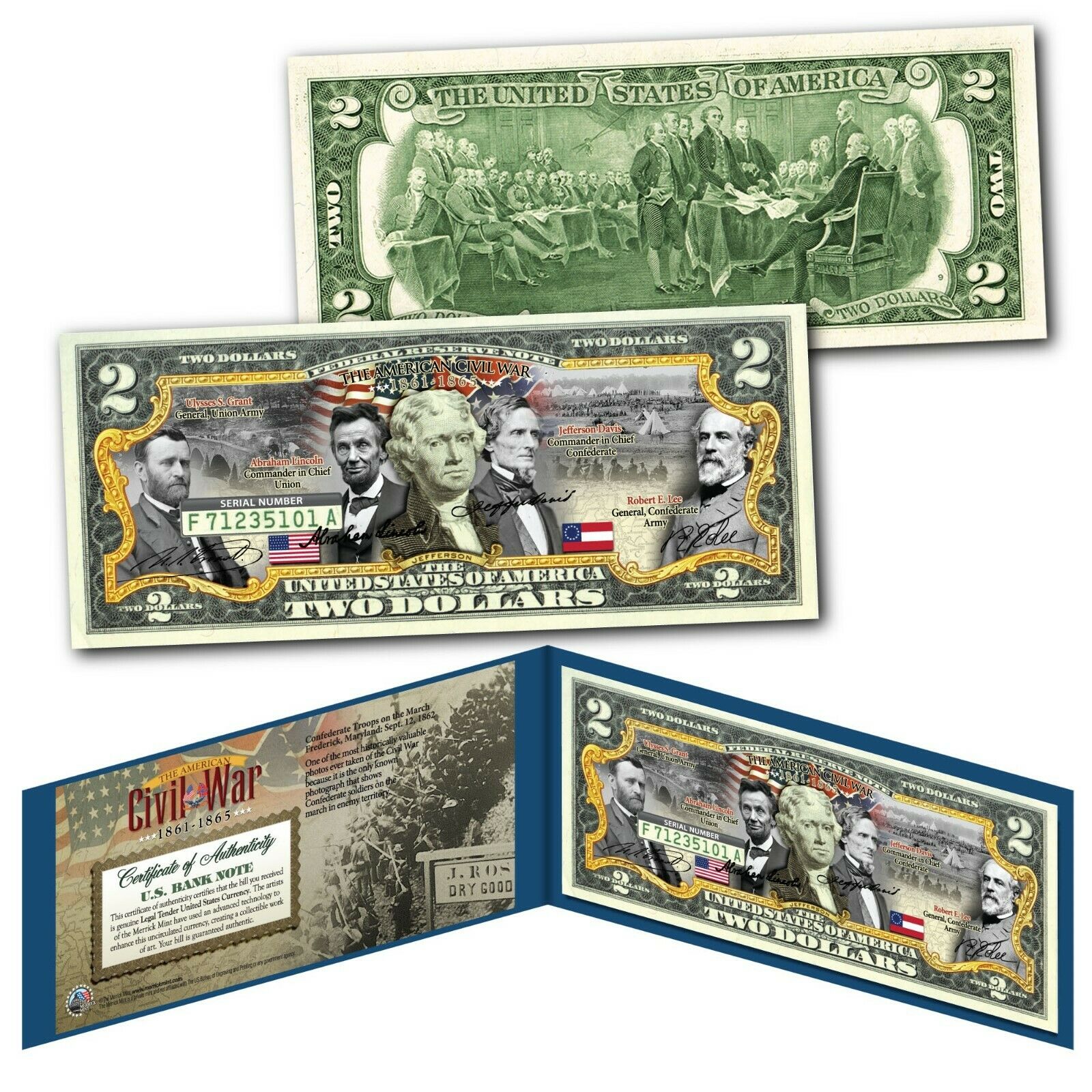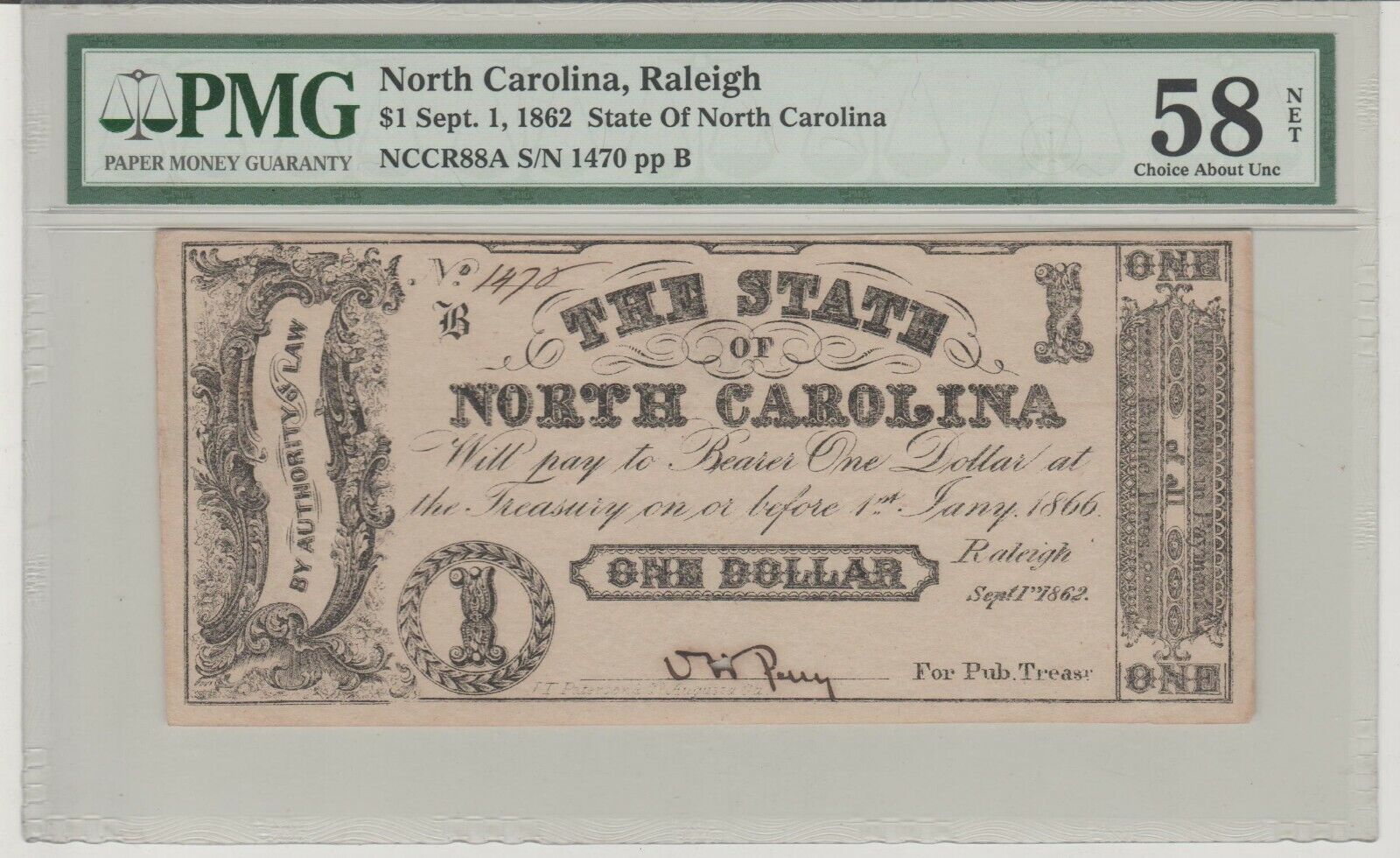-40%
T-22 PF-1 1861 Confederate Paper Money - PMG Very Fine 25 - bright!
$ 54.64
- Description
- Size Guide
Description
T-22 PF-1 .00 CSA Currency.Thetis to the left. Group of Indians in the center. Woman with “X” to the right. Issued from November 13, 1861 through May 15, 1862.
Serial number 14870. Plen A.
PMG Very Fine 25. Cut-out-canceled. Bright!
Genuine.
This is another of the beautiful red Confederate Treasury notes. It was printed by the Southern Bank Note Company in New Orleans, which was the politically correct name adopted by the New Orleans branch of the American Bank Note Company headquartered in New York. A family of Indians graces the center of this note. The chief is holding a bow and a tomahawk. The woman to the right holds an ear of corn. The “X” in her other hand represents the denomination. To the left is Thetis with a scepter of Neptune, which represents sovereignty of the sea. This note was “Receivable in payment of dues and fundable in 8% stock or bonds.”
There are two varieties of this note printed on thick red fiber paper. The “C” plate was printed on the same sheet as an “A” plate , “A” plate , and a “C” plate . The “A” and “B” plate T-22s were printed on a sheet of four with a corresponding “A” and “B” plate T-31. For some unknown reason, a small number of the T-22s were issued with red ink serial numbers. This is an interesting rarity, and the hardest to find of the entire T-15-19-22-31 group.
There are several of these reportedly in Uncirculated. XF and better are very rare. This type is hard to find at a show in better than F-VF, as nice examples are tightly held. Occasionally, a VF or VF+ appears. This type is typically overgraded at the VF level, leading one to believe that VFs are more available than they really are. The T-22 was made on thick paper and retains body even when well circulated. It is important to remember the eight cross-fold guideline when evaluating a strict “VF” T-22 for purchase.
A note about 3rd party grading. PCGS and PMG do a good job putting a floor on quality within a grade range and have become proficient in detecting repairs (though occasionally they miss something, or see something that is not there, as we all can).
Notes housed in Net or Apparent holders have a wide range of quality from very nice (in rare cases may be nearly choice) to dogs with major problems, so each needs to be evaluated on their own.
However, PMG and PCGS focus on technical grading due to circulation and damage and do not have a mechanism for evaluating condition or eye appeal - whether a note is average, better than average, choice or gem for the grade based on its color, trim and margins. The exception to this are slabbed notes of New or Uncirculated grades to some degree. This is important as Very Fine, Extremely Fine or AU notes can have a wide range of values depending on these factors not reflected in the slab grade. A fully framed Confederate or obsolete note is worth considerably to a lot more than one that is trimmed into the margin for the same grade. Likewise, color is important. These factors can affect the value of a note by 50%, 2-1 or even 3-1, e.g., an AU 58 (PPQ or not) T-20 1861 CSA note trimmed into the margin is worth between 0 and 0. The same grade, AU 58 (PPQ or not), with a full frame and good color/inking is worth something like 0 to 00 depending on eye appeal. I will continue to use the terms plus for above average, choice and gem to mean varying degrees of superiority of condition and eye appeal of a note within a grade as documented in my book which is based on what collectors seek out and pay premiums for.
In coins, we’ve seen the third party graders add things like full bell lines, full head, full bands which reflected the market. I’d expect either the grading services or another party to do the same for paper money. If you are just buying the number on the holder for the best price, you may well be buying low end notes for the grade!
Pierre Fricke. Immediate Past President of the Society of Paper Money Collectors; Professional Numismatists Guild (PNG); Professional Currency Dealers Association (PCDA); ANA, EAC, etc...
BuyVintageMoney.
Author of the standard guide book to Confederate money - Collecting Confederate Money Field Edition 2014.
Free shipping and insurance.
eBay has announced that it will start to collect sales tax on behalf of sellers for items shipped to customers in Alabama (Jul 1), Connecticut (Apr 1), Iowa (Feb 1), Minnesota (Jan 1), New Jersey (May 1), Oklahoma (Jul 1), Pennsylvania (Jul 1), and Washington (Jan 1). Additional states are being added like Idaho and more than 20 others. This is the new internet tax out of the US Supreme Court Wayfair decision. Buyers are responsible for paying this sales tax.
See eBay information for list of states eBay charges this tax payable by buyers to eBay as part of eBay invoices -- https://www.ebay.com/help/selling/fees-credits-invoices/taxes-import-charges?id=4121#section4










